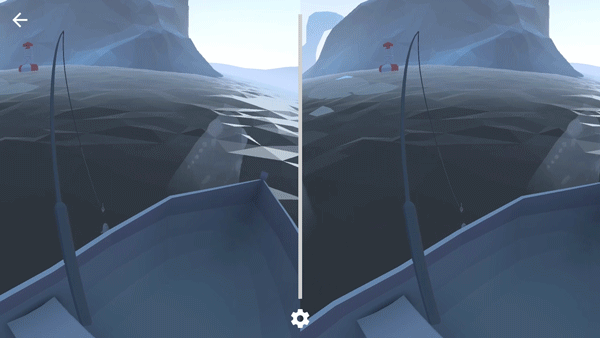Assignment 1: The VR Salon
by J.C. Kuang
- September 5
- in
The VR Salon served as an excellent primer for studying and creating contemporary VR content. After studying platforms in both VR and MR, such as the Oculus Rift and the Hololens, it is clear that the rapidly increasing interest in content creation for these mediums will lead to more engaging content which makes more effective use of their advantages (and limitations).
A particular technique which was almost universally employed across different VR platforms was the inclusion of a brief acclimation period, usually in a small "tutorial" room, such as Oculus Rift's white room in SteamVR or the calibration segment preceding Google Cardboard's Arctic Journey. Noticeably, viewers who began their VR experience in medias res, who were not afforded this opportunity to better adjust themselves to the virtual environment seemed to be slightly less immersed and more aware of the outside world than those who were; the former seemed to be more disposed to provide feedback to those of us observing them, indicating that they were treating the VR set as a novelty or a diversion rather than a tool for experiencing empathic and immersive media content.
The most striking VR experience I sampled during our VR Salon was the HTC Vive. It's ability to blend binaural audio, 3D images, and a well-defined, albeit somewhat limited walking space into a relatively smooth storytelling vehicle has incredible potential. As I explored a French castle captured in photogrammetry, I was struck in particular by the extreme precision of the Vive's motion tracking capability, (which at times seemed even more precise at following my head than any Cardboard set) across its 3 main components as I walked around a room with what appeared to be a coffin in its center. My interaction with this setpiece was the highlight of the experience, as I used the Vive's motion controllers to position myself on top of it and then "jump off", attempting to fool myself into a kinesthetic reflex to falling. Unfortunately, the combination of 1) wires restricting my movement and tethering me, figuratively, to reality, and 2) a lack of significant background noise to drown out the chatter of the salon significantly hampered my immersion.
Ironically, however, the presence of significant background audio allowed Google Cardboard's Arctic Journey to present a more complete experience. During the flight sequence, I felt significantly increased presence due to my elevated position on a chair, which I thought neatly illustrated and underscored the important question of imitating sensations of movement as the next critical development in crafting effective VR content. Arctic Journey also brought me to the conclusion that a relatively low-resolution piece of content could be compensated for by employing a stylized and consistent art style. At least in my experience, CG animation served just as well as environments which aspired to photo-realism, but often fell just short due to current limitations in display technologies even in higher-end sets. To paraphrase a principle of game design, the more specific one is about situations analogous to reality, the more one has to stipulate on them. Therefore, it follows that a situation which is less specific about reality affords a viewer greater opportunities to "fill in the blanks".

COMMENTS